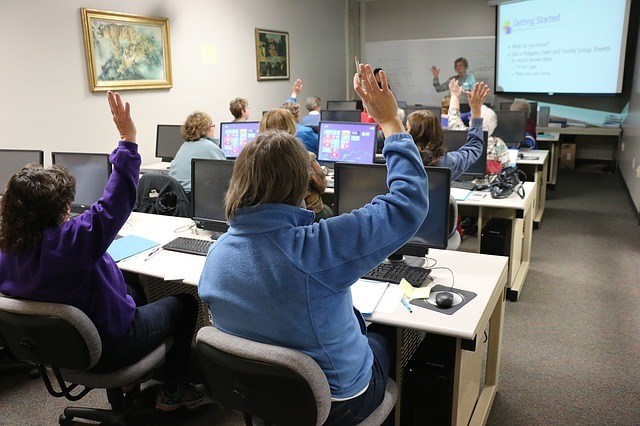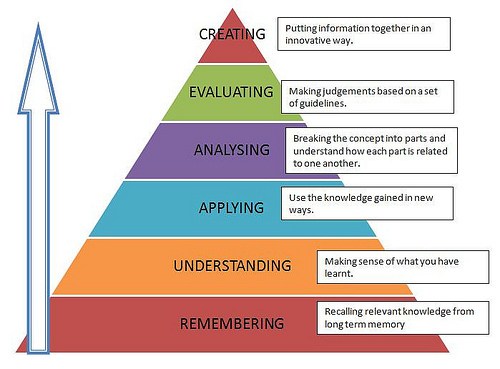Flipped Classrooms: Why Teachers Should Adopt The Concept Immediately
As an educator, I’m sure you must have come across the idea of flipped classrooms in the recent past. There has been a rapidly increasing trend of flipped learning, with it moving out experimental realms to become an accepted method of instruction.
What exactly is the idea behind this concept though? And how is it affecting the eLearning sector? That is what I would like to address today.
The Flipped Learning Network—a non-profit organization co-founded by Jonathan Bergman—defines flipped learning as follows:
"Flipped learning is a pedagogical approach in which direct instruction moves from the group learning space to the individual learning space, and the resulting group space is transformed into a dynamic, interactive learning environment where the educator guides students as they apply concepts and engage creatively in the subject matter".
The concept of flipped classrooms is a new strategy for information dissemination. It all started with the need to achieve better retention in the learning of a concept, by providing the study resources prior to the lecture.
In simple terms?
A flipped classroom is where students are given study material like short video lectures, reference notes, etc., for studying the topic beforehand. The classroom time involves discussions over these topics and application-based learning using activities like quizzes, group assignments, and debates, based on the study material provided earlier.
I’m digressing a little, but there is actually an interesting story about how the concept of flipped learning originated.
The Origin Of Flipped Classrooms
In 2007, Jonathan Bergmann and Aaron Sams first put flipped classrooms into practice when both the teachers started uploading the recordings of their PowerPoint presentations for the students who had missed the classes. This idea became popular soon and gained students’ approval.
Going a step further, they then started pre-broadcasting all their lectures so that students could actually study the material before coming to class. This helped Bergmann and Sams address the students’ queries and provide a hands-on experience in understanding the concept since the theoretical foundation was already there.
Many other such experiments gradually proved the effectiveness of the concept and soon, flipped learning became a favored method of instruction.
We always tend to assume that flipped learning is essentially conventional learning turned on its head, but that is not the case. There are some significant differences between the conventional and flipped classroom methods; here, we look at the highlights.

Source: dschap/pixabay
Conventional Vs. Flipped Learning
In the conventional method of learning, the educator first delivers necessary information in the form of lectures and then evaluates the learning of students through examinations, assignments, and quizzes.
A flipped classroom, as opposed to this, is aimed at decentralizing the educator as the primary source of information. The students’ first interaction with the subject is through pre-recorded lectures, reference videos, reading assignments, or a combination of these.
The teachers can also share topics of discussions in the form of questions that shall be discussed in the classroom environment. There are various interactive options like voice-threads, audio podcasts, forums, etc., that can be used to deliver the primary information about the subject.
In flipped learning, the classwork involves collaborative work upon an assignment, a guided research paper, or a quiz. The main difference from the established form of learning is that students are already comfortable with what they are supposed to work upon.
As a result, the emphasis is not on concept building but on concept engagement through application-based activities. The teachers create a more active environment and help out the students arranged in groups with their queries and doubts. They can also initiate discussions at any point in time during the classroom.
Why Are Flipped Classrooms So Effective?
In an eLearning context, flipped classrooms are rapidly taking the stage, on account of better engagement and retention. Have a look at some of the reasons why flipped learning is proving to be so effective.
Flipped classrooms help you:
1. Conduct Homework Activities In The Classroom
The traditional way of learning involves home assignments as the main activity of application that might pressurize some of the students and parents.
A flipped classroom transfers this point of application-based learning directly to the classroom under the direct supervision and guidance of the teacher. This decreases the workload of a student at home and indirectly on the parents who act as teachers at home.
2. Reduce Workload On Teachers So That They Can Focus Solely On Teaching
Flipped classrooms use the pre-classroom time for imparting the first knowledge of the topic. In a traditional setup, the first few classes are spent on the same. This saves time that can be utilized in preparing quality sets of study material and designing application-based classroom teaching.
In the established form of education, teachers are noticeably too busy throughout the duration of the course in a sort of parallel work of teaching the concepts and evaluating assignment work.
A flipped classroom involves direct interaction of the teachers with students at the application part of the subject. All the energy of the educator hence goes to making the students understand the topic of discussion.
3. Enhance Learning With A Greater Emphasis On Application
The usual method of learning has seen some setbacks in the form of low application percentage, a high number of school/course dropouts, and lack of basic understanding that has in a way transferred to eLearning as well.
A flipped classroom aims at achieving greater understanding through more emphasis on application.
The eLearning revolution has seen enthusiasts becoming comfortable with the digital medium as the source of information. This comfort level has been utilized in the flipped classroom model where the first information is imparted through multimedia.
Further understanding and application of the concepts are done in the classroom, where there is an advantage of the basic knowledge of the topics and a rough idea about what sort of questions might be discussed. This helps to achieve enhanced participation, create active environments, and most importantly, improve qualitative learning in the same period of time as compared to a traditional classroom.
4. Improve Retention By Stressing On A Post-Classroom Study
We know that in the traditional model of learning, once the assignments are evaluated, the tendency of a student to correct it and make a note of it or re-do the work is missing. Flipped classrooms fill this gap as activity-based learning makes it easy for students to correct themselves and take mental notes to learn the subject in the most organic manner.
Flipped Classrooms Unplugged
1. Role Change For Student And Teacher
The implication of a flipped strategy is a change in the role of students and teachers. Student-led learning is focused upon, as opposed to teacher-led learning in the traditional method. The educator can utilize the change in the scope of the learning objective to execute collaborative and cooperation based learning with the students instead of the earlier front-of-the-class position.
This way, the responsibility is distributed and decentralized from the educator to the learner. By using flipped classrooms, educators can use the extra instructional time to create an active environment with the students where there is constant feedback available for the students.
2. What Is 'Flipped Learning' And What It Is Not?
‘The Flipped Class: Myths vs. Reality’ is a 3-part resource by Jon Bergmann, Jerry Overmyer, and Brett Wilie that provides some useful points in understanding the concept of a flipped classroom. The flipped classroom is a means to potentially increase student-teacher interaction time. It provides for an environment where learning is student-initiated and the teacher is not the "sage on the stage" but the "guide on the side". Flipped classrooms, as defined in the article, are a blend of direct instruction with constructive learning.
A flipped classroom is not merely a synonym for online videos or replacing teachers with videos. The flipped classroom is also not ‘working without a structure’ but working with an objective of enhanced learning of every individual of the group.
3. Flipped Classroom And Mastery Learning—Flipped Mastery
A flipped classroom deviates from the traditional model because in a flipped classroom it becomes essential for a student to have a basic understanding of a topic to start with the next topic. This feature is similar to mastery learning. Mastery learning produces exciting results in terms of increased individual learning and increased overall learning.
A combination of the above 2, flipped mastery, eliminates the need for grading papers as students view and learn a lecture only when they have mastered the previous necessary concept or the precursor.
4. Dynamic, Personalized Learning
As students play an important role in the learning process, the exercises can be designed by analyzing the performance and understanding of the students in the pre-classroom learning. Maximum value can thus be generated in this way. Other models of education can be used to form a blended learning. These models include gamification learning, mastery learning, cooperative learning, and so on.
Flipped Classrooms—The Need Of The Hour?

Source: nist6dh/flickr
In a time when people have started questioning conventional learning, flipped classrooms are one of the best alternatives.The eLearning world has moved above and beyond typical formats and rigid teaching processes. The student community needs something different and better, suited to the fast-paced lives of today.
Implementing the idea of flipped classrooms in eLearning is not only a great way to boost student engagement and retention, but also to make that process fun.
In turn, students can use this knowledge for the benefit of the society and develop a genuine love for the subjects introduced to them. Flipped classrooms prove that education is not just about reading books and writing assignments, it is all about learning and sharing of knowledge for the greater good.
What do you think about flipped classrooms in eLearning? Feel free to drop a comment to let me know!

